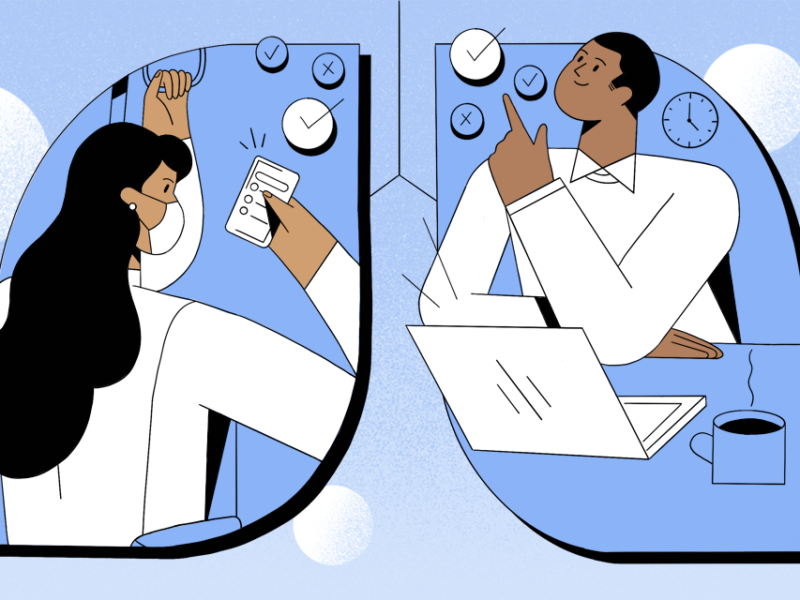What is Dengue?
A virus transmitted by Aedes aegypti and Aedes albopictus mosquitoes, dengue is a flu-like illness characterized by a high fever and severe joint pain, sometimes with hemorrhagic manifestations. There are four distinct serotypes of the virus (DEN-1, DEN-2, DEN-3, DEN-4) (1). Recovery from one infection provides lifelong protection from a homologous (same-strain) infection and partial temporary protection from the other strains. However, subsequent heterologous (different-strain) infection increases the risk of severe dengue manifestations.
The Global Burden of Dengue
The global incidence of dengue has increased since it was first recognized in the 1950s, and approximately 2.5 billion people are at risk for dengue infection (1). There are an estimated 50-100 million annual dengue infections in tropical and subtropical regions around the world (1,2). Severe dengue is endemic in Asia and Latin America, and is a leading cause of an estimated 500,000 hospitalizations and 15,000 deaths among children in the region (1). The average reported dengue episode lasts 11-12 days and the estimated total annual cost associated with annual dengue illness can amount to $587 million international dollars (2) when accounting for healthcare and societal impacts.
Current Treatment and Prevention
There is no current vaccine or treatment for dengue. Prompt recognition and access to proper medical care for rehydration can reduce severe dengue mortality rates from 20% to 1% (1). Furthermore, current prevention methods include vector control through environmental management, proper waste disposal (particularly significant in urban areas as the Aedes mosquitoes prefer to lay eggs in artificial containers like rubber tires), insecticides, as well as personal and household protection with screens and long sleeved clothing.
Interestingly, Brazil has experimented with genetically modified (GM) mosquitoes to combat dengue infection. These GM mosquitoes are infected with the bacterium Wolbachia which prevents the dengue virus from replicating inside the mosquito and cannot be transmitted to humans (3). In April 2012, one year after the release of the 10 million GM male mosquitoes, 85% of the eggs were Wolbachia-positive, indicating that the GM-mosquitoes were overriding the wild-mosquitoes which results in a decrease of dengue transmission (4). Brazil has approved the release of these GM mosquitoes into more districts and plan to release the results of this study early in 2016 (4). The GM mosquitoes were piloted in the Cayman Islands and Malaysia without any unfavorable outcomes (4).
Hope for a Dengue Vaccine
Potential dengue vaccines must be tetravalent to induce an immune response against each of dengue’s four serotypes. The French company Sanofi-Pasteur, is the primary dengue vaccine candidate contender, with ongoing phase III clinical trials. The twenty-year, $1.7 billion dollar investment in a live-attenuated tetravalent (addresses the four strains) vaccine (CYD-TDV) has shown to be highly effective against severe dengue (5, 6, 7). With a vaccine efficacy of 60% against all four serotypes and an acceptable clinical safety profile, the vaccine candidate reduced hospitalization rates due to severe dengue by 80% among children 2-14 years old (8). Sanofi has enrolled over 40,000 volunteers in Asia, Latin America, and the Caribbean in its randomized, double-blinded, placebo-controlled multicenter trials and remains the most advanced Dengue vaccine candidate currently in development (8). However, efficacy questions linger over the results from the Asian phase III trials. The three dose regimen was least effective against Dengue-2, the most prevalent strain in Asia, and efficacy increased with the child’s age (9, 10).
Due to different epidemiologic profiles for dengue in Asia and Latin America, Sanofi is proposing vaccine roll-out tailored to each region (11). For example, dengue infection among children is not as common in Latin America as it is in Asia—so, it would make little sense to include a dengue vaccine in the Expanded Program on Immunization (EPI) in Latin America (11). EPI is a WHO program with the objective to increase global childhood vaccination rates and developed a standardized vaccination schedule for children (11).
Sanofi hopes to reduce dengue mortality by 50% and morbidity by 25% before 2020. Other pharmaceutical companies such as Novartis, Merck, and GlaxoSmithKline also have dengue candidates in development, although none have progressed to phase III clinical trials to date. The Sanofi Dengue vaccine is expected to be licensed sometime this year (12).
Additional Information
The press release of the Latin America Phase III results can be read here: http://www.who.int/immunization/research/development/QA_Dengue_vaccine_LA_phIIIstudy_final.pdf?ua=1 and on the company website here: http://www.sanofipasteur.com/en/articles/sanofi-pasteur-s-dengue-vaccine-candidate-successfully-completes-final-landmark-phase-3-clinical-efficacy-study-in-latin-america.aspx
The results of the Asian Phase III clinical trial can be read in the initial Lancet publication here: http://www.thelancet.com/journals/lancet/article/PIIS0140-6736(14)61060-6/fulltext
References
- WHO. 2014. Dengue and Severe dengue. Fact Sheet No 117 http://www.who.int/mediacentre/factsheets/fs117/en/
- Suaya JA et al. 2009. Cost of dengue cases in eight countries in the Americas and Asia: a prospective study. Am J Trop Med Hyg. 80(5):846-55.
- BBC. 2014. Brazil releases 'good' mosquitoes to fight dengue fever. http://www.bbc.com/news/world-latin-america-29356232
- Mendes H. 2012. Brazil tests GM mosquitoes to fight Dengue. Nature. http://www.nature.com/news/brazil-tests-gm-mosquitoes-to-fight-dengue-1.10426
- Reagan J. 2014. Sanofi says first dengue vaccine may be available in second half of 2015. Reuters. http://www.reuters.com/article/2014/11/03/us-sanofi-sa-dengue-idUSKBN0IN1YC20141103
- Capeding MR et al. 2014. Clinical efficacy and safety of a novel tetravalent dengue vaccine in healthy children in Asia: a phase 3, randomised, observer-masked, placebo-controlled trial. The Lancet. 384(9951):1358-1365.
- WHO. 2014. Questions and Answers on Dengue Vaccines: Phase III study of CYD-TDV in Latin America. http://www.who.int/immunization/research/development/QA_Dengue_vaccine_LA_phIIIstudy_final.pdf?ua=1
- Sanofi Pasteur. 2014. SANOFI PASTEUR'S DENGUE VACCINE CANDIDATE SUCCESSFULLY COMPLETES FINAL LANDMARK PHASE III CLINICAL EFFICACY STUDY IN LATIN AMERICA. http://www.sanofipasteur.com/en/articles/sanofi-pasteur-s-dengue-vaccine-candidate-successfully-completes-final-landmark-phase-3-clinical-efficacy-study-in-latin-america.aspx
- Mahalingam S, Herring BL, Halstead SB. Call to action for dengue vaccine failure. Emerg Infect Dis. 2013 Aug. http://dx.doi.org/10.3201/eid1908.121864
- Garde D. 2014. Sanofi's $1.5B dengue vaccine shows Phase III promise, but questions linger. Fierce Biotech. http://www.fiercebiotech.com/story/sanofis-15b-dengue-vaccine-shows-phase-iii-promise-questions-linger/2014-07-11
- WHO. 2011. Dengue vaccine roll-out: getting ahead of the game. Bulletin of the World Health Organization. 89(7):469-544. http://www.who.int/bulletin/volumes/89/7/11-030711/en/
- Dengue Vaccine Initiative. 2011. Planning for the Introduction of Dengue Vaccines. Americas Dengue Prevention Board Highlights. http://www.denguevaccines.org/sites/default/files/ADPB-Brazil_11-Short.pdf
